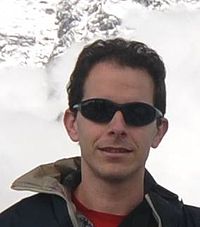Nir Shaviv Scientist
Nir Joseph Shaviv (Hebrew: ניר יוסף שביב, born July 6, 1972) is an Israeli‐American physics professor, carrying out research in the fields of astrophysics and climate science. He is a professor at the Racah Institute of Physics of the Hebrew University of Jerusalem,. From 2014 he is also a member of the Institute for Advanced Study in Princeton.He is best known for his solar and cosmic-ray hypothesis of climate change. In 2002, Shaviv hypothesised that passages through the Milky Way's spiral arms appear to have been the cause behind the major ice-ages over the past billion years. In his later work, co-authored by Jan Veizer, a low upper limit was placed on the climatic effect of CO2.His best known contribution to the field of astrophysics was to demonstrate that the Eddington luminosity is not a strict limit, namely, that astrophysical objects can be brighter than the Eddington luminosity without blowing themselves apart. This is achieved through the development of a porous atmosphere that allows the radiation to escape while exerting little force on the gas. The theory was correctly used to explain the mass-loss in Eta Carinae's giant eruption, and the evolution of classical nova eruptions.Shaviv was interviewed for The Great Global Warming Swindle documentary. In the film he states:In 2012, he contributed, along with Werner Weber, Henrik Svensmark and Nicola Scafetta, to the book Die kalte Sonne. Warum die Klimakatastrophe nicht stattfindet (The Cold Sun) of Fritz Vahrenholt and Sebastian Lüning, a book expressing skepticism of anthropogenic global warming, which attracted considerable interest in Germany.
Search
Scientist
| Field of study | |
|---|---|
| influenced by |
